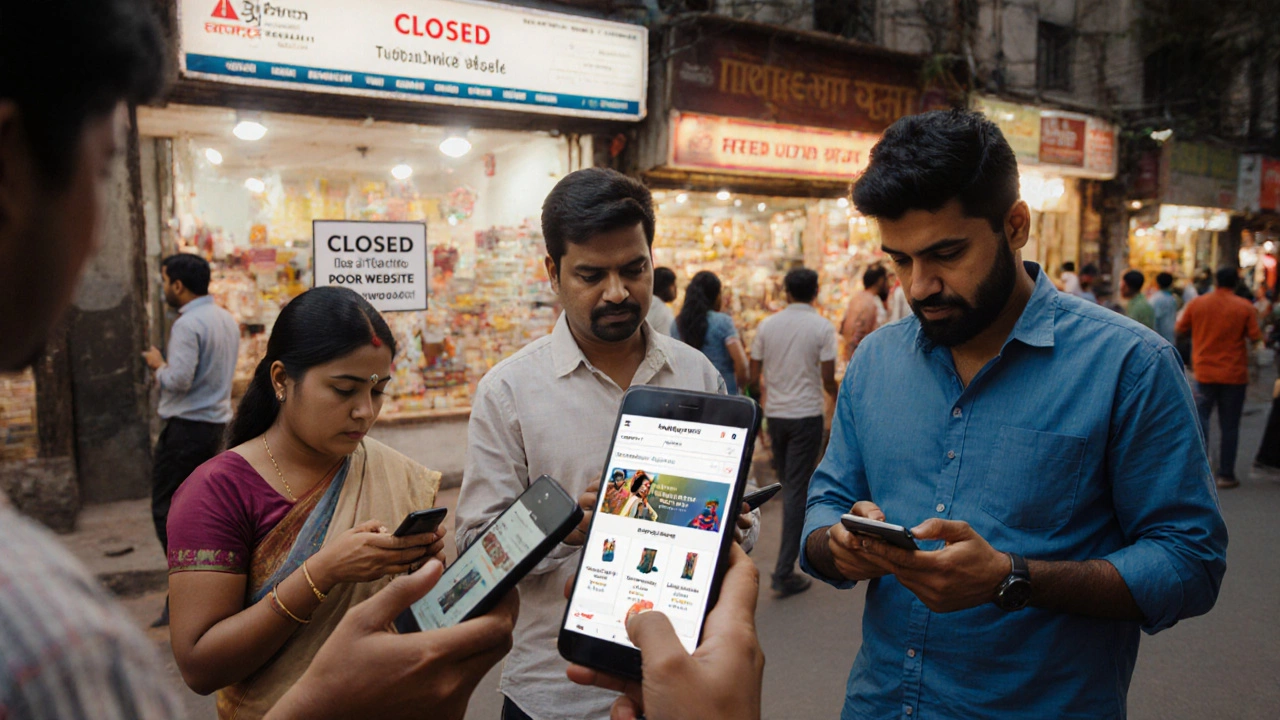Ever tried opening a website on your phone only to see it zoomed out, stuffed with tiny text and buttons you’d need a magnifying glass to hit? Bad times. That’s a site stuck in the desktop era, ignoring the reality that most people browse from their phones. Responsive web design fixes this by making websites flex and flow to fit any screen—no more pinching or awkward scrolling.
Getting responsive isn’t rocket science, but you do have to nail three basics: flexible grids, fluid images, and media queries. Without those, your site simply won’t keep up as screens change from a giant desktop monitor to grandma’s old iPad. The good news? Once you get the hang of these building blocks, you’ll be ahead of sites that still look like they’re stuck in 2011. Let’s break down what each one actually means and how you can use them right now.
- Why Responsive Design Matters
- Flexible Grids & Layouts
- Fluid Images & Media
- Media Queries: The Secret Ingredient
Why Responsive Design Matters
If you’re not thinking about responsive web design today, you’re already behind. More than 60% of web traffic comes from mobile devices. People browsing on their phones expect everything to work fast, look great, and just make sense—otherwise, they bail in seconds. Google knows this and actually puts mobile-friendly sites higher in search results. So if you want eyeballs on your site, getting responsive is non-negotiable.
Picture someone visiting your website at work, then checking it again later from their couch on a tablet, and maybe even pulling it up on a friend’s TV. If your layouts, buttons, and images don’t adapt, you could lose potential customers simply because your content is too hard to read or use. Studies have shown that even a one-second delay in page response can cut conversions by 7%. That adds up fast.
Keeping things consistent across devices makes visitors trust you—and actually want to stick around. Your site isn’t just being compared to direct competitors but to the giant brands nailing user experience. Responsive design isn’t about chasing trends; it’s about making sure anyone, on any screen, can use your site without a headache.
- Sites using responsive web design see lower bounce rates and longer visit times.
- It saves you from building and updating separate mobile and desktop sites.
- You show search engines your site is modern and worth recommending.
If you want people to find you, engage, and come back, your site’s got to work everywhere—not just on your laptop.
Flexible Grids & Layouts
If you want a site that works on phones, laptops, and massive monitors, you have to stop thinking in pixels and start thinking in percentages. That’s where flexible grids come in. Instead of telling an element to be exactly 400 pixels wide, you say it should take up 50% of the screen, for example. This way, everything scales up or down with the user’s device. Flexible grids are the backbone of responsive web design, letting your entire layout shift smoothly without breaking.
Modern CSS gives you powerful tools for this. The most popular are CSS Grid and Flexbox. These let you build layouts that automatically rearrange as the screen size changes—no more stubborn columns spilling off the edge. If you look at almost any well-made site since 2017, odds are, Grid or Flexbox is running the show under the hood.
- Grid lets you create two-dimensional layouts (think newspaper style or dashboards) where items can jump into new rows and columns based on the device.
- Flexbox is great for simpler, one-direction layouts (like nav bars or footers) that stack or spread out automatically.
The magic number to remember here is 12. Out of the top 1000 websites, about 84% use a 12-column grid system because it’s super flexible and easy to split up into halves, thirds, quarters, and so on. Even Bootstrap, the world’s most-used front-end framework, chose 12 columns for exactly this reason.
| Grid System | Years Popular | Common Usage |
|---|---|---|
| 12-column | 2010–2025 | Bootstrap, Foundation, custom sites |
| 16-column | 2016–2025 | Large dashboards, data-heavy apps |
| Custom/Fluid | Ongoing | Unique brand layouts, creative agencies |
So, if you want your site to look good everywhere, build your layout with flexible grids and test on a few screen sizes. The trick is to plan your columns in percentages or fractions, not fixed pixel widths. Once that clicks, you’re already halfway to a site that works for everyone, every time.

Fluid Images & Media
So, you’ve got your layout playing nice on different screens, but what about your photos and videos? If these stay fixed, they can wreck your design by stretching, shrinking weirdly, or making users scroll sideways. The simple fix: make all images and media fluid so they scale with the rest of the page.
The main technique is using CSS. Add max-width: 100%; to all your images and they’ll never spill out of their containers. This makes sure images shrink down on mobile but don’t blow up to blurry pixel-mess on bigger screens. Here’s a quick example:
img { max-width: 100%; height: auto; }
Videos aren’t off the hook either. Try putting videos inside a container with some CSS tricks (like using position: relative and padding-bottom) so they stay in proportion and fit any width. This is a must, especially with YouTube or Vimeo embeds.
| Image/Media Type | Common Problem | Quick Solution |
|---|---|---|
| Images | Overflow, blurry on retina screens | max-width: 100%; srcset for high-res |
| Videos | Fixed size, black bars, won’t scale | Responsive containers, aspect ratio CSS |
| SVGs | Lose quality if scaled wrong | Use width: 100%; and viewBox |
Want to see the difference? According to a Statista report from 2024, over 58% of global website traffic comes from mobile devices. If your images and videos aren’t responsive, that’s a lot of frustrated visitors. For more speed, compress images with tools like TinyPNG and use modern formats like WebP. Lighter files = faster load = happier users (and Google).
One last pro tip: test your site on both a phone and a huge desktop. Catching issues early saves you a bunch of pain later. When you use responsive web design for your images and media, your site will actually feel made for every device, not just squeezed to sort of fit.
Media Queries: The Secret Ingredient
If you want a website that’s truly fit for everyone’s screen, you can’t skip media queries. These little bits of CSS let your site pick and choose what styles to use based on things like screen size, device type, or even orientation. No more one-size-fits-all layouts—your site can look sharp on a smartwatch or a 4K monitor.
Here’s how it works: media queries act like a filter. You set up rules directly in your stylesheet using @media. This way, you target screens narrower than a certain width or bigger than a certain height, for example. Suddenly, your navigation shrinks into a thumb-friendly menu on mobile, or your images scale up nicely on a bigger display. It’s what makes responsive web design possible in real life, not just in theory.
- Breakpoints Matter: You’ll hear a lot about breakpoints—that’s just the screen sizes where your layout shifts. The most common breakpoints in 2025 are 576px (phones), 768px (tablets), 992px (small laptops), and 1200px (large desktops).
- Simple Setup: A typical media query looks like this:
@media (max-width: 768px) { ... } - Stack, Hide, or Rearrange: Want the sidebar to drop under your main content on small screens? No problem. Need big buttons for thick thumbs? Again, media queries.
Stats show that more than 58% of global web traffic now comes from mobile devices. Here’s a quick look at device usage:
| Device | Percent of Web Traffic |
|---|---|
| Mobile | 58% |
| Desktop | 38% |
| Tablet | 4% |
The takeaway? If your site’s not using media queries, you’re missing out on the majority of users—plain and simple. One tip: when writing your CSS, go mobile-first. Set up your base styles for small screens, then add media queries to adjust things as screens get bigger. This way, your site loads faster for mobile users and avoids weird zooming issues.
No fancy frameworks needed—just a solid understanding of media queries, and you’ll keep your site looking crisp anywhere. If you’re not using them yet, you’re handing over your audience to the competition.


